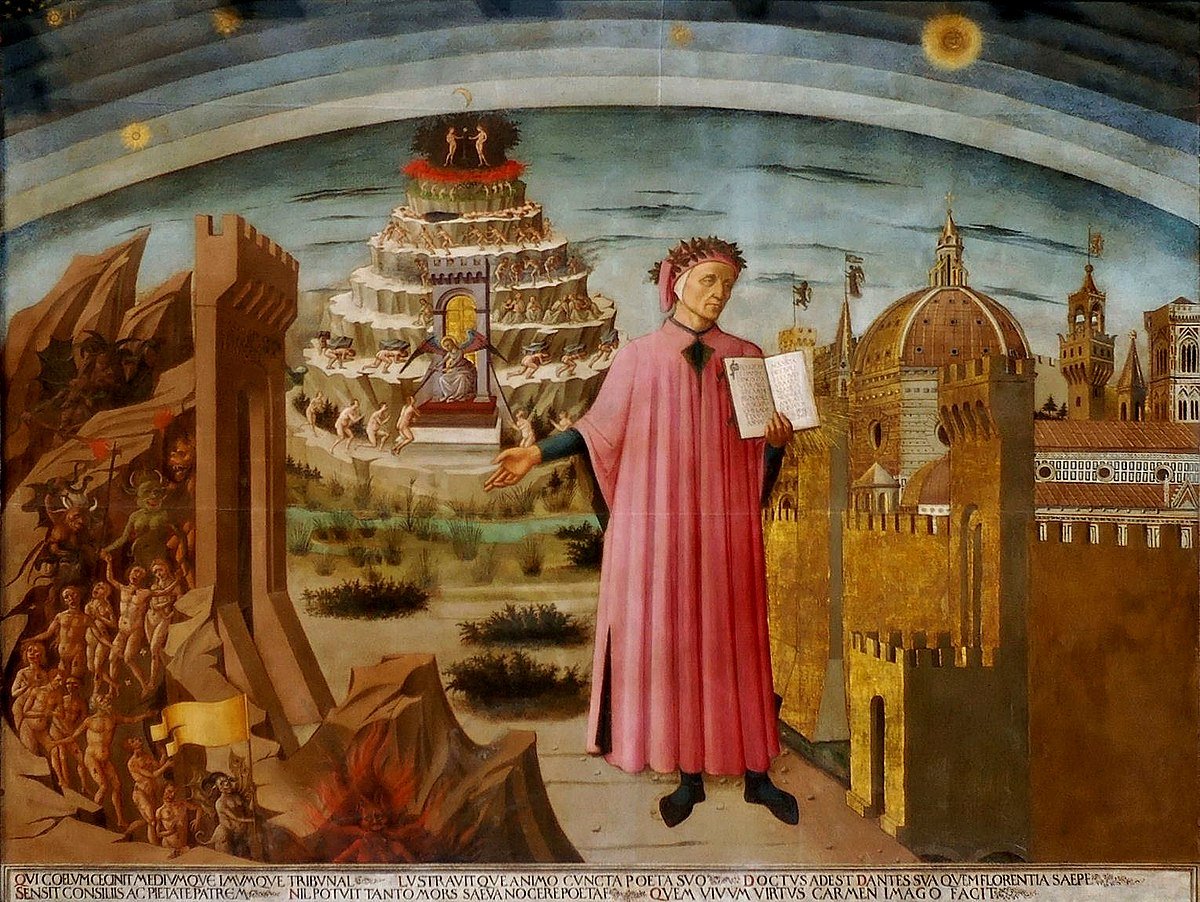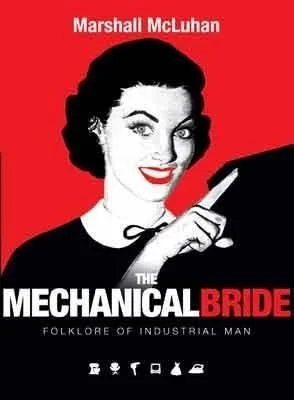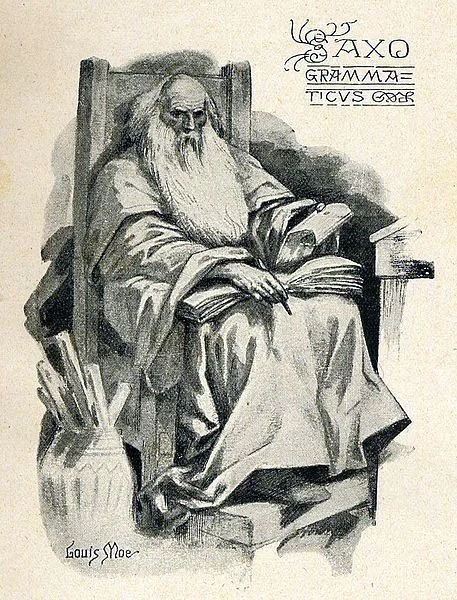The Art of Adaptation
Many people have referred to The Divine Comedy as fan fiction — more properly speaking, though, it should be considered an adaptation: of the the Epic form, the Katabasis motif, and Islamic Averroism to Christianity, and of Christianity itself to the “vulgar” Italian tongue. For many people at the time, this might have been the most accessible form of Christian belief.
As we’re on the precipice of the sort of moment where we may not have the luxury of allowing politics to exit our minds, let’s keep talking about aesthetics a bit. There’s something that Edgar and I have been talking about a bit lately in somewhat loose and imprecise terms – with the acknowledgment that I could very well be trying to nail jello to the wall, I’m going to explore some issues related to adaptation.
Adaptation refers to the transformation of what is disappointingly called “content” from one medium to another. Oftentimes, we think of this as adapting a book or similar artifact into a filmic or televisual medium, but this is a limited view. When you get down to it, adaptation is the super-category for translation – all translation is the adaptation of something from one language to another. Even when it’s a book being translated, it is a movement from one medium to another, as it has to “pop” out of the typographic medium and transform before returning.
I know less about translation than Edgar does or I should – but I feel comfortable commenting on adaptation in general, if only because I’ve been marinating in nerd culture forever and I have multiple degrees in English, which I think gives me an actually interesting perspective on this. I say this because the standard line on adaptations in nerd culture – which has become pop culture in general – is that the adaptation shouldn’t change a single thing. Such thinking, I believe, is exactly wrong.
I haven’t read this, but those are some unhinged eyes, aren’t they?
My undergraduate mentor was the student of Walter J. Ong. I’m not as familiar with Ong’s work as I should be, but Ong’s mentor was Marshall McLuhan, and I’m quite familiar with his work. Marshall McLuhan’s work began with The Mechanical Bride in 1951, which inaugurated the study of pop culture, but didn’t become mature until 1964’s Understanding Media.
McLuhan argued a number of things about media – the most famous of which is that it can be divided into “hot” medium that monopolizes a single sense and captivates the audience or a “cool” medium that work upon several senses and invite the audience to assemble the senses into a collective hole. Radio is hot. Comic books are cold. Film is hot. Television is cold.
Those last two really show the problem with McLuhan’s read – not that it’s wrong, but that it’s incomplete. It was based on his understanding of how media functioned until then: he couldn’t imagine two media converging, and becoming undifferentiated. This isn’t simply the result of prestige television, but also in the ascension of the television director to the position of the film director (watch the arc of Joss Whedon’s career to understand this and also at least one reason it’s not a good thing.)
Despite the poster, this has a 75% on Rotten Tomatoes.
McLuhan also argued, a bit more persuasively, I feel, that the content of a medium is always another medium: tune your television to a basic cable channel, where you join the broadcast of a movie already in process – let’s say, in honor of the Canadian McLuhan, it’s the 1983 Rick Moranis/Dave Thomas movie Strange Brew (also featuring Max von Sydow and Mel Blanc), itself an adaptation of their sketch from SCTV – but you notice fairly quickly that the whole thing is a fairly transparent parody of Shakespeare’s Hamlet, one of the most important works of English-language theater, itself an adaptation of the “Story of Amleth”, part of a 13th century poetic history, the Gesta Danorum, written by Saxo Grammaticus.
History to poem to play, contained in the expanded form of a television sketch, filmed and then rebroadcast on television.
Where I differ from McLuhan in my read is that he didn’t think that the content mattered at all as far as how society functioned. For him, everything was about the medium. Hence his famous adage: the medium is the message. Though I must admit that he did differentiate between media with semantic content (television, film, books) and without content (the light bulb.)
In the McLuhanian read, an adaptation is just the old medium being placed in the new medium wholesale. To an extent, this is true: all adaptations are going to have baggage from their original version. The number of people who declared that they would leave the theater if the sound effects of Wolverine’s claws in the first X-Men movie didn’t match the “snikt” noise used in the comics was mind boggling.
Of course, that was stupid. Because “snikt” is a nonsense word and English orthography isn’t 1:1 – if you don’t believe me, just google “ghoti.”
People were essentially complaining that a sense detail portrayed in a live-action movie might not match what they originally imagined it to be. This is the problem with thinking of adaptation as just taking something from one format to another, and I would actually argue that film and comics are incredibly close to one another – hence why you can have successful superhero movies and successful superhero comics, but most superhero-focused prose fiction falls flat (both Edgar and I loved Hench, by Natalie Walschots, and I will return to that book in a moment, because I think that it is an extremely good adaptation of that genre into fiction – something it gets around by not being an adaptation of something in particular).
Likewise, we can look at the difference between a game of Dungeons and Dragons and a book like Lord of the Rings and we can see a certain commonality between them – however, if you were to scoop the wizard of a Dungeons and Dragons game out and trade them with Gandalf, the result would be disastrous for both stories: because in the former, the wizard is expected to hurl fireballs and do a certain amount of magic every day, while Gandalf only does something like three explicitly magical things in the entire trilogy of Lord of the Rings. Yet he feels more “Wizardy” than any character portrayed by someone rolling dice at a card table.
Saxo Grammaticus, previously mentioned, looks more “wizardy” than all of them, though.
It’s here that I get what I began to think of as the “Wizard Rule of Adaptations,” which is, in short “fireballs might be fun to imagine yourself throwing, but they are not fun to read about.”
However, this isn’t everything – so let’s propose less of a spectrum of media (hot-to-cold) and more a compass graph, a la the political compass. One axis is, of course hot/cold. The other I think of as being High Fidelity (Hi-Fi) to Low Fidelity (Lo-Fi).
Hi-Fi media reproduces the aesthetic experience in sharp detail. Usually, but not always, this is sense data. The goal, more than anything else, is fidelity to whatever its source is. It may or may not monopolize the senses in question (that’s a hot-cold thing) but the information it gives about physical reality tends to be unambiguous. Comics and film are high-fidelity. I would argue that traditional role-playing games are high-fidelity. Most, but not all, video games are high fidelity.
Lo-Fi media potrays sense data in vague detail, opting instead to leave much of it open to interpretation. What it tends to offer instead is a starting point for theorizing and interpretation. It’s less interested in faithful reproduction than in transformation of the material being examined, reworking it into something new in a fashion that invites the audience to do the same. Literature – prose, but especially poetry – is a low-fidelity medium. The internet, in general, through democratization, has become a low-fidelity medium. What I have described as “indie role playing games” I would argue are low-fidelity.
Neither of these forms of media is superior to the other, but I think that there are two things that can be said about their interrelation: first, healthy aesthetic development in a culture requires both hi-fi and lo-fi media. Second, each is at its worst when it is trying to be the other: which is not to say that comics can’t be “literary” or that books can’t be highly visual or take their cues from film. Instead, I think it’s important to understand that what works in comics and film – the spectacle of it – can only work in literature in spite of itself, not because of itself.
This is where we return to Hench. Here we have a story about the cost of super-heroics, and it is fantastic: but it doesn’t work because of the “eyeball kicks” of the fights – Walschots took the time to earn each “fight” that she portrayed, and she earned it by portraying the central character’s, Anna’s, internality.
Okay, it’s not normally my thing, but I think this movie’s actually pretty good.
This is one thing that prose can do that film does much more poorly. (Edgar and I disagree about which version of Blade Runner is best. I prefer the Final Cut, almost solely because they removed the voice-over.) The inner life of characters in film must be implied, it must be shown at the remove of what emerges through the physical actions that the actors portray. In print, this can be portrayed in loving, poetic, and messy detail, limited only by the skill of the author. When you’re not limited by the senses that the audience uses to take in story-relevant information, then everything becomes much clearer. Does it matter what crudites are served at a party described by Jane Austen or what said hypothetical crudites taste like? No. I’m not the biggest Jane Austen fan, but I can acknowledge that the whole point of what she was doing is in illustrating the inner lives of her characters in a way that makes them recognizable to the audience for whom she was writing.
I will accept no input on the matter of Tom Bombadil that is not accompanied by a valid social security number.
When you adapt a Lo-Fi medium into a Hi-Fi medium, as in Pride and Prejudice (2005), you generally have to add in more material that is not otherwise present – if memory serves, the book doesn’t include any information about the floor plan of the house, but this is definitely present to the film. Likewise, there are things removed in the act of adapting – no one (at least no one whose opinion I respect,) really complained about the absence of Tom Bombadil or the Barrow-Wight from The Fellowship of the Ring (2001), because most viewers agreed that this would be less interesting in film than it was in the book (and, of course, it wasn’t really that interesting in the book, outside of certain concerns that can be addressed at another point).
What this boils down to is that these media are different, and they must be handled differently. Sure, Hench isn’t an adaptation of a Marvel or DC superhero story, but it’s still an adaptation of the genre in question, and genre adaptations still operate on articulable principles that apply to more direct adaptations. It’s simply that they receive less flak for doing do.
When someone is approaching their own creative practice and they wish to do a genre adaptation that doesn’t normally fit into the medium in which they’re working – say, they wish to adapt a story imagined for a dungeon-crawl-heavy video game into prose fiction – it’s necessary to rethink the approach, because a procedural description of thirty or forty individual combats against weak enemies would read more like a manual for pest control than compelling fiction. What is needed isn’t necessarily more action, what’s needed is the internal lives of the characters, an examination of their hopes and fears, and their experience.
The only video game adaptation of this that would work would need to be directed by Hideo Kojima, honestly. Someone get him a copy of this before he discovers Infinite Jest.
I might offer that the best “dungeon crawl” book is, in fact House of Leaves. Think about it: there’s danger, there are a group of people of differing abilities, there’s a vast and unmapped physical space. It carves out all of the portions of such a story that might conceivably not work in prose fiction and makes heavy use of the tools that are native to that medium (especially the footnote, which simply cannot exist in most other media).
Likewise, the best adaptations find ways to use the limitations and native tools of their medium in a way that takes the place of another medium’s native tools. Disco Elysium, for example, adapts the internal monologue of hard-boiled fiction into a medium that has dialogue trees – this is exactly the sort of innovation that the medium needed, and it’s one that happened by accident (the character designer of the game had to take over after one of the artists left, and designed a “character portrait” for each skill, which invited the format of discussion). The end result is giving the player a great deal of freedom in defining the personality of the central character, while also giving that character an incredible depth that would not otherwise be present, and which has been lacking from the genre since its inception.
These are all examples of this being done well – it can, certainly, be done poorly and there is some value to that – but what I’m trying to prove here is that thinking along these lines is a useful and valuable thing for a creative individual to do.
When creating, it is necessary to use your chosen medium to achieve the end you’re aiming for. Certain things work, and certain things don’t. Very clearly, you need to think through this so that you can aim for the former and away from the latter – because if you’re trying to do the latter, you will succeed only in spite of your choices, never because of them.
The ultimate test, frankly, is not whether you can perfectly emulate the features of the story when you have jumped from one medium to another – making the frame of the comic book perfectly match that of the cinematographer, making the bass line of the song match the meter of the poem – but is another matter entirely: can you make the adaptation evoke the right mix of emotions? Can you draw the same feeling out with a completely different set of tools altogether?
That, when you get down to it, is the real question.







